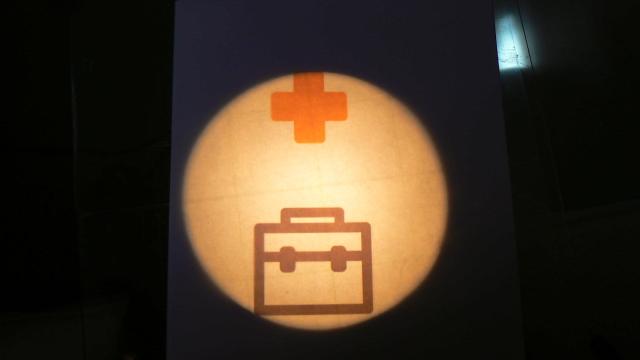I spend a lot of time thinking about the impending climate apocalypse. I mean, c’mon, I write about it for a living. However, with this clear understanding of where humanity is headed if we don’t get our shit together comes a lot of fear and anxiety. How do I deal with such feelings? Why, plans and preparation, of course.
I tease my boyfriend”who works in carpentry and construction”that he’ll have to outfit our future home with an underground bunker. That might sound ridiculous, but I’m actually quite serious. When the water wars happen, I’ll be safe tucked away (ditto for the zombie apocalypse). Alas, an entire house with enough yard space for a bunker is fairly unrealistic for the foreseeable future living in New York City. But with the climate crisis worsening, I figure I need to do something and soon. That’s why I’ve opted to prepare a climate emergency kit in the new year.
I know. Most people resolve to visit the gym or read more in the new year. That’s just not how I roll. I need to be better prepared for a climate disaster.
I often dream about saving my Long Island-based family from zombies. I’m stuck trying to figure out how to reach them from Queens all the while fending off hoards of zombies alone with a machete. It’s terrifying, and I’m pretty sure these dreams are a metaphor for the climate apocalypse. In New York, that likely means some kind of dangerous hurricane, flooding, the polar vortex, or some extreme heatwave. I reached out to some experts about how to prepare my climate disaster kit. Here’s the deal so you can get ready, too.
Disaster looks different for all of us. There’s rural vs. urban, inland vs. coastal, hot vs. cold. In cities, people face the potential of running out of supplies because of “vulnerable supply chains,” Eric Stern, a professor at the University of Albany’s College of Emergency Preparedness, Homeland Security, and Cyber-Security, wrote in an email to Earther. While rural areas might have more resilient food supplies and potentially indigenous knowledge from tribal nations in the area, they may lack immediate access to healthcare and medicine.
These are all realities families have to consider when preparing for what may hit them. Would a blackout mean you’ll face the harsh cold, or would it mean you’d lose access to air conditioning? Is a shelter nearby, or would you have to stay home? No matter where we are and what we face, though, a few items are necessary for your kit. What I learned in preparing to create my kit is that there are actually two types of kits: a go-bag and a long-term kit.
If you’re in a hurry to evacuate, you grab your go-bag. If you’re forced to stay in a place for a while, you turn to a longer-term stay kit, Jeff Schlegelmilch, the deputy director of the National Centre for Disaster Preparedness, said in an email to Earther.
“The main difference between a go-bag and a stay kit is the amount of contents,” Schlegelmilch said. “A go bag is based on how much you can carry. Whereas to stay, the planning guidance is to have enough supplies for 72 hours to a week or more.”
I’m planning to make one of each in 2020. We all should. I could very well be in a situation where my apartment floods and I gotta dip”or one where flooding is limited to the streets outside, and I’m stuck at home for days. Both kits should include a few essentials to last for at least three days:
-
Water (one gallon per person per day)
-
Food (non-perishable that doesn’t require much heat or water to prepare)
-
First aid resources (Band-Aids, gauze, medicine)
-
A battery-powered radio
-
Flashlights
-
Cash
-
Protective plastic covering for important documents (such as your birth certificate)
Water is important, but in your go bag, you have to be sure to bring only what you can physically carry with you. A few gallons can get heavy, so be mindful. As for food, that’s really up to you, but canned vegetables and canned beans sound like a win for me. Perhaps even nuts and dried meats like jerky. These won’t go bad right away, and you can pretty much eat them as is. Plus, I’ve watched enough does exist showing the benefits of being connected to your community. Inanimate objects can go only so far; people need to be able to rely on one another.
“There is a lot of research out of many disasters”¦ showing social connectedness, neighbours helping neighbours, being the strongest predictor of survival as well as health and mental health after a disaster,” said Schlegelmilch. “So if you are not sure of what to put in your kit, talk to your neighbour, have a block party, get to know others who you may be surviving a disaster with.”
Perhaps it’s time I knock on my neighbours’ door. The college-aged women next door might be incredibly obnoxious with their Saturday night shenanigans, but we could be key to each other’s survival if and when shit goes down. And with the way crisis, I can’t help but think that this scenario is inevitable.
